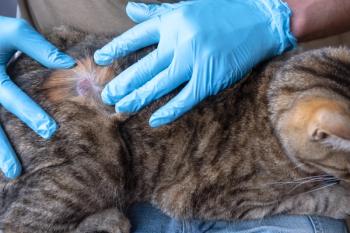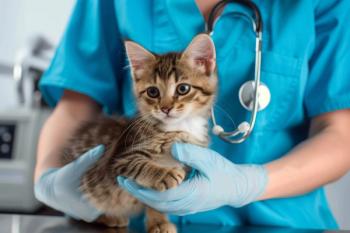
Women rock gender balance in profession
When Dr. Peter Eyre graduated from veterinary college in 1960, three of his classmates were female.
When Dr. Peter Eyre graduated from veterinary college in 1960, three of his classmates were female.
Now, the dean of Virginia-Maryland Regional College of Veterinary Medicinesays just a handful of male students apply to his program, let alone gainentry. The profession's seen a dramatic shift, Eyre says, forcing collegesto do an about-face.
"When I went to school, women were deliberately kept out of theprofession; there was a longstanding prejudice and tradition," he says."That thought rapidly changed over the last 40 years. It's changedfrom the days when 5 percent of students were women to now 80 percent.
"The entire profession will be women within a decade and a half.It's inevitable."
Steady migration
While no one's pinpointed a single motive for the gender shift, the Associationof American Veterinary Medical Colleges (AAVMC) recently released tellingfigures as part of its Comparative Data Report. The group's numbers showthat while 2002 enrollment at the country's 27 veterinary colleges toppedat 9,363 students, just 2,365 were male or 25.3 percent. The remaining 74.7percent, or 6,998 students, reportedly were female.
"The numbers are extreme, but I'm not surprised," says AAVMCExecutive Director Dr. Lawrence Heider. "These are the trends. They'rehere to stay."
While Eyre surmises that the influx of female veterinarians stems fromyears of gender-based ostracism, he admits that's not the only answer.
"It's partly a rebound due to the fact that women were once keptout, but you would've expected it to balance out if that were the only issue,"he says. "It's gone way beyond that."
Economics drive out men
Popular thought insists the gender shift largely relates to economicsas veterinarians make up one of the lowest paid professional groups, reportsthe National Commission on Veterinary Economic Issues.
That idea is further exemplified when considering the starting salariesfor new graduates versus their educational indebtedness, highlighted inthe Feb. 1 Journal of the American Veterinary Medical Association (JAVMA).According to the American Veterinary Medical Association's annual employmentsurvey, the mean starting salaries of 2002 graduates in all veterinary fieldswas $40,364. At the same time, at least 87 percent of graduates incurreda mean educational debt of $72,719 each.
With a comparative debt load, doctors in human medicine earn nearly threetimes more, which lures men away from veterinary medicine, Eyre says.
"The economics of the profession we've been so concerned about havebeen demonstrated," he says. "Women are not as interested in thebottom line, that's just a societal, cultural fact, even if it's politicallyincorrect."
View from within
Building on Eyre's theory is Dr. Shirley Johnston, dean of Western Universityof Health Sciences College of Veterinary Medicine (WesternU), which startsits inaugural class this fall.
Johnston, the nation's only female collegiate head, explains the gendershift by linking two 1980s phenomena: Average annual incomes started droppingas the profession's gender demographics began to drastically change.
"One school of thought is that as women move into professions, societydevalues that profession," says Johnston, one of six women in her 1974graduating class. "Think of nursing or teaching, which at one timewere male-dominated fields. When women become the predominate group in aprofession, it may be that men undervalue that work."
Family first
There's also an argument that women are not as financially successfulas men, don't spend as many hours working, are altruistic and less willingto be fiscally responsible, Johnston says.
Whether or not that's true, new graduates seemingly aren't willing towork as much as older generations, she adds.
"Women want a work-life balance," says Tracy Dowdy, a consultantwith Brakke Consulting, Inc. "They value time off more than money.Just having vacation time or working a four-day week or long maternity leavemeans a lot. Money doesn't usually come with those perks."
Those needs have changed the practice of veterinary medicine, Eyre says.
"Not long ago, anyone who wanted to do part-time veterinary workalmost would've been run out of the profession," he says.
Compassion in the profession
Women have not only changed the workplace mindset but they've broughtwith them a heightened sense of compassion, says Dr. Michael Blackwell,dean of the University of Tennessee's veterinary college.
"One of the biggest impacts that women have had on our professionhas been to raise our sensitivity toward animals," Blackwell says."I think men and women differ quite a bit when it comes to compassion."
It's nurturing the human-animal bond and the growth of small animal practicesthat have attracted women to the veterinary field, Eyre adds.
"When I was in college the first animal I dissected was a horse.Nowadays the first animal students dissect is a dog," he says. "Thesmall animal practice is no longer an orphaned part of this profession."
Newsletter
From exam room tips to practice management insights, get trusted veterinary news delivered straight to your inbox—subscribe to dvm360.





